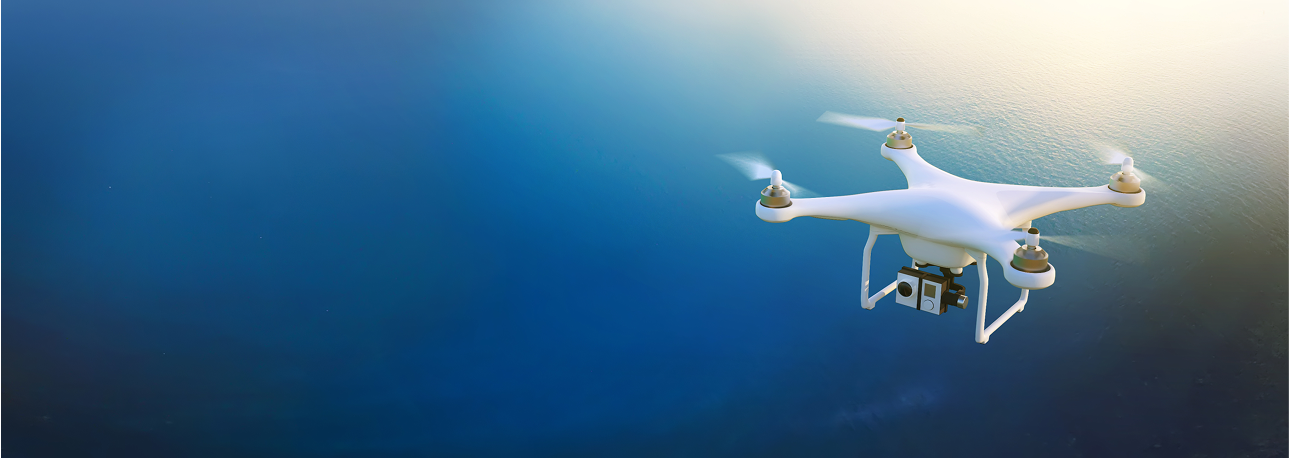SAFE PROCUREMENT OF DRONES FOR EMERGENCY SEARCH & RESCUE
Experience in public-sector procurement proved key to the success of an Innovative Pathfinder project that enabled the Maritime and Coastguard Agency to deploy drones in support of time-critical and life-saving missions at sea.

As an executive agency of the Department for Transport (DfT) in the UK, the Maritime and Coastguard Agency (MCA) works to prevent the loss of life on the coast and at sea.
In addition to responsibilities around legislation, guidance and certification, the MCA runs a 24-hour maritime and coastal search and rescue emergency response service.
The annual statistics for search and rescue give an idea of the scale of operation.
Each response of a search and rescue helicopter (SARH) to an emergency, as notified by the Aeronautical Rescue Co-ordination Centre (ARCC), is known as a ‘tasking’.
In the year ending March 2024, 2,735 civilian SARH taskings were logged across the UK. This figure represented a 6% increase year-on-year and works out at an average of more than seven taskings a day. In total, some 1,425 people were rescued and 159 assisted.
The MCA remit also covers environmental risks, via counter-pollution work, for example.
Challenge to expand search capability
Given the range of responsibilities, combined with the response frequency, MCA search and rescue has traditionally proved relatively resource intensive. Helicopters are big-ticket budget items, which also carry onerous operational running and maintenance costs.
In addition, there are requirements throughout for skilled and experienced personnel.
Not surprisingly, therefore, the Agency is keen to explore opportunities to enhance and extend the service with cost-effective technologies that might support future development.
Announced in May 2020, the Drones Pathfinder Programme was designed to accelerate procurement of innovation at the MCA. It was managed by Connected Places Catapult in partnership with DfT and supported by the Civil Aviation Authority (CAA). The core aim was to explore and develop the safe use of drones Beyond Visual Line of Sight (BVLOS).
Whilst the primary rescue assets — the helicopters, the bases and the people — would remain essential, there was potential for technological enhancements in the search function, explains Phil Hanson, Aviation Technical Assurance Manager, at the MCA:
“The rescuing is a given, but with the searching there is huge scope for innovation. The drivers are really about making those searches more efficient, more effective and reducing the risk to our personnel — those are the three key tenets.”Phil Hanson, Aviation Technical Assurance Manager, at the MCA
Economies in fuel consumption would offer some ecological and financial benefits (albeit modest ones in the context of the service as a whole), via savings in emissions and costs.
Innovating to reduce risk and cut cost
So, with challenges spanning everything from regulation to engineering, the procurement process sought to tap into the expertise of companies with backgrounds in industries such as defence and security, as well as more obvious links with aerospace and aviation.
Working within the MCA, the aviation team advocates strongly for the need to embrace innovation and conducts regular horizon-scanning exercises in a bid to stay abreast of the latest developments in technology. That said, given the overriding emphasis on safety and reliability, the Agency is necessarily careful to avoid any risk of service disruption.
Fundamentally, the primary challenge is not so much technological or cultural, but commercial. Cost is an issue for all public service providers, with search and rescue no exception. Procurement budgets are precious, meaning all expenditure must be justified.
The MCA does pursue every opportunity to secure funding, through initiatives such as the government’s Future of Flight action plan. Understandably, however, certain schemes are targeted more at industry than government entities themselves, and so options are limited.
Project learnings and key takeaways
In the case of the MCA Drones Pathfinder, the key to success was having both in-house teams and project partners that shared extensive experience of public-sector procurement of technological innovation. This blend of skillsets, backgrounds and expertise made for a very smooth process, saving time and money, whilst delivering positive outcomes.
- Without access to such resources, things might have been very different, says Hanson: “We were very alive to the fact that there was quite a large risk to be challenged and that the challenges would be around the process. Therefore, we ensured that we followed the process correctly. But, for people who are not particularly experienced in procurement, and with the market being so volatile and wide, there is a real danger of challenges emerging.”
- Across procurement more broadly, the need for additional support and guidance is clear. Even at the MCA, though, there were still learnings for an experienced team to take away. The key process insight was around the importance of identifying all stakeholders early.
- Whilst the MCA team had worked hard to take the regulator (CAA) on the procurement journey with them from the start, other key stakeholders emerged over time. For future projects, it was agreed that more advanced stakeholder mapping would be advisable.
- Building on the success of the Pathfinder and other R&D work, the MCA has now gone on to procure and implement a contract to replace (or update) all its aerial search and rescue assets in the UK. Innovation will be a cornerstone of this ongoing development strategy.

Do you have a case-study to share with us and other councils?
Share your council's innovative procurement success story and inspire others across the UK to adopt transformative approaches for their communities!

